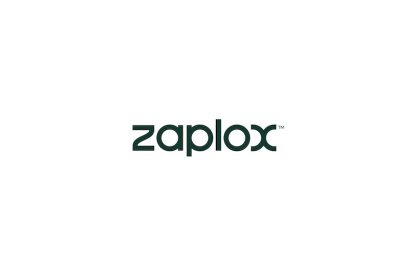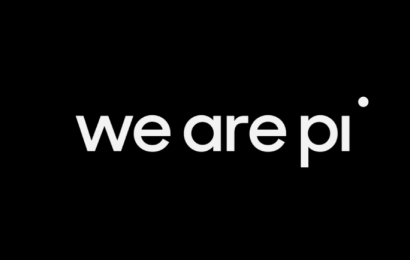Ramona Dumitru: “We’ve committed to a long-term objective of building an organizational culture that is client-oriented”
A double Bachelors degree with more than 15 years experience in 360 degrees communication and marketing projects. Trained and experienced professional in creating positive relationship, developing multidimensional communication strategies and managing to implementation complex communication issues for Multinational Corporations. Member of cross countries communications teams and projects, with international exposure and sound expertise in strategic communications activities from various industries, focusing on: public utility services, pharmaceutical, IT&C and banking industries.
AdHugger talked with Ramona Dumitru, Corporate Affairs and Communications Director Veolia Romania, about how the pandemic impacted the company, leadership, Apa Nova’s new communication paradigm and digitalization.
- The whole world is going through a shift right now and people expect responsible, transparent communication from the brands and companies they interact with frequently. What does “leadership during times of crisis” mean to you as a communications professional?
From a personal standpoint – and in line with Apa Nova’s creed, without a doubt – leadership during times of crisis means putting employees first. People are at the core of our business, not only because performance is inextricably linked to them, but because employees are the best brand ambassadors. Given the nature of the business we’re in, providing essential services to over 2 million people, it’s important for us to reach everyone and ensure them that their safety is our number one priority.
During a crisis, when more often than not, information is inconsistent or unavailable, the levels of uncertainty and stress elevate which lead to the need of transparency, guidance and making sense of what has happened.
This is the time when leaders and companies implicitly, must prove the authenticity and purpose that guide them in building a reassuring, better future, by paying attention and listening to what their communities need – clear and transparent communication starts with understanding concerns and questions posed by the audience.
- What’s changed in the way you approach the communication process now?
We’re proud to have always been one of those companies who are constantly looking for ways to improve – whether it’s how we communicate with our clients, the services we offer, or how we manage internal communication – so we tend to keep all our communication lines open at all time. In the last years, we underwent a complex digitalization process and that meant a great shift in how we operate. Including communication tools – such as the www.apanovabucuresti.ro website and the mobile app.

- Apa Nova is providing essential services for over 2 million people, daily. It is a huge responsibility and making sure the messages and information reaches them effectively and correctly is not an easy task. What are some of the tools you use to ensure this happens successfully?
In the last 7 months, we witnessed a paradigm shift that will regulate the way we communicate for the foreseeable future. Media outlets and the government centered their communication on clear and simple guidelines regarding measures of prevention, lockdown protocols and other rules. Companies followed that lead, but in a more community-oriented way and a change in the tone of voice – empathy and solidarity have been the foundation and intention of our communication processes. We focused on new and extended operational protocols for all our stakeholders and customers, by implementing digital instruments that helped managing the new normal in a more effective way. Of course, in order to do this, we relied heavily on technology, but we were also mindful of our customers who may not have access to digital instruments or are not tech savvy and we provided them with several offline channels – just as safe.
- What were some of the adjustments you had to make to these communication instruments since the pandemic started and with it, the new communication paradigm, as you called it?
Even before the pandemic, we’ve committed to a long-term objective of building an organizational culture that is client-oriented. The new context, however, forced us to reassess the “how-to” of the way we interact. In the early stages of a crisis, communicators must provide useful information to encourage a state of calmness; how to stay safe is paramount. We take the safety of our clients and teams, and the quality of the services we’re providing very seriously. Thus, from alternative ways of paying the water bill – our Safe is Simple campaign – to adopting a more virtual approach to the communication process with our digital platforms, including, of course, our SoMe channels.
From successful digital initiatives to internal communication projects and continuous analysis of the dynamics our communities are facing, we are always looking to improve our work and innovate accordingly.
- Since you’ve mentioned digitalization, what impact does it have on crisis communication?
Given that customers can now communicate their dissatisfaction quickly and to a large audience, social media and the digital realm have become a slippery place to be in times of crisis. However, I choose to see digitalization as an ally, not an enemy. As I mentioned previously, we underwent a complex digitalization process and understood the ways it can benefit us, especially in regard to communication, by creating multiple touch points, real time updates and uninterrupted access to information, quick and transparent dialogue with every one of our stakeholders – all these elements are crucial in challenging times.
- How is Apa Nova responding – from an internal communication standpoint – to how employees (including the operational teams) might feel about the current situation, defined by uncertainty and fear?
Without a shadow of a doubt, the safety and wellbeing of our teams are at the top of our priorities. We cut no corners when it comes to our people. Over the last months, the communication with the employees has remained effective while being increased in quantity, correct and transparent, which helped the company navigate the health crisis smoothly. Every internal communication channel has been exploited, so to speak, to make sure the messages come across loud and clear.
Furthermore, we’ve analysed, proposed and implemented a great pool of options Apa Nova teams could choose from when it came to work during the pandemic and encouraged them to reach out to us with ideas and solutions.






